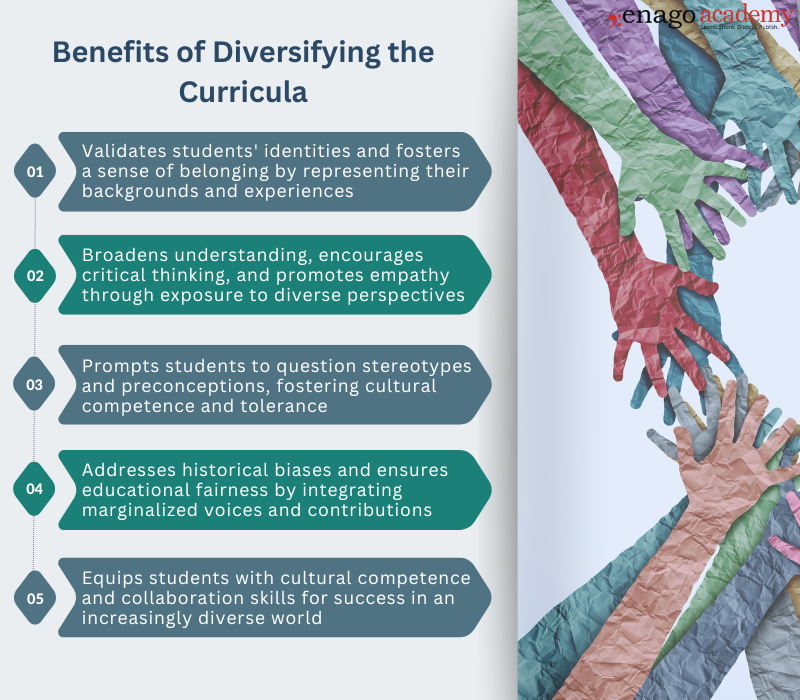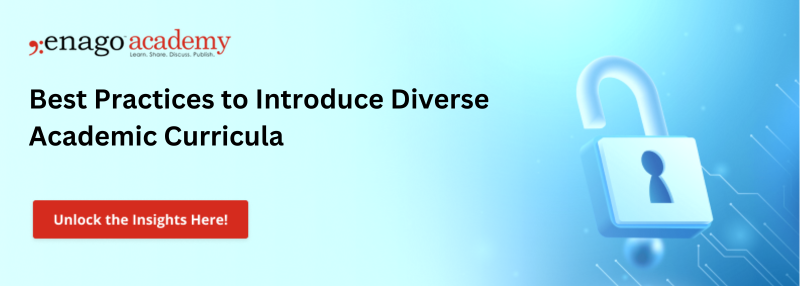Need for Diversifying Academic Curricula: Embracing missing voices and marginalized perspectives

In classrooms worldwide, a single narrative often dominates, leaving many students feeling lost. These stories, fall short of capturing the entire spectrum of human experiences and history. For students from diverse backgrounds, encountering such one-sided narratives can make them feel overlooked and silenced.
However, in a world striving to overcome barriers, why should knowledge itself become a hurdle? Embracing missing voices and marginalized perspectives by diversifying academic curricula can stand as a testament to the richness of human experience and the strength of diversity.
Drawback of a Singular Narrative
In today’s collaborative environment, singular narratives not only limit our understanding of complex issues but also propagates harmful stereotypes and biases. The absence of diverse voices and viewpoints can lead to a distorted representation of reality.
The experience of Chimamanda Ngozi Adichie, a prominent Nigerian author and novelist, illustrates the dangers of singular narratives. Growing up in Nigeria, she only encountered books featuring white characters and settings, leading her to initially write stories disconnected from her own reality. It was not until she discovered African writers that she realized her own stories and experiences could be represented in literature. This realization empowered her to write about her own reality, challenging the dominant narratives.
Even her American roommate’s perception of Africa, shaped by a single narrative of poverty and conflict, prevented her from seeing Adichie’s complexity as an individual. Similarly, Adichie’s initial perception of Mexico was shaped by media narratives that portrayed a singular story of immigration and struggle.
When we rely on a single story, we risk oversimplifying complex realities, reinforcing prejudices, and failing to recognize the shared humanity that binds us together.
Importance of Representation in Academic Curricula
In academia, the absence of representation and inclusive narratives becomes a hurdle for international students, often leaving them disconnected from the course material. Diversifying curricula not only creates a welcoming environment but also enriches the learning journey by celebrating diverse perspectives.

The benefits of diversifying the academic curricula includes:
1. Empowers Diverse Students:
A diverse curriculum reflects the backgrounds, cultures, and experiences of all students, validating their identities and fostering a sense of belonging. When students see themselves represented in the materials they study, they are more likely to engage actively with the content and feel empowered to succeed.
2. Expands Perspectives and Worldviews:
Exposure to diverse perspectives, voices, and narratives broadens students’ understanding of the world. It encourages critical thinking and empathy by challenging them to consider different viewpoints and experiences.
3. Challenges Assumptions and Biases:
Diverse curricula acts as a catalyst for students to confront and examine their own assumptions, stereotypes, and biases. By encountering a range of perspectives, students are encouraged to question preconceived notions and stereotypes, leading to greater cultural competence and tolerance.
4. Promotes Equity and Social Justice:
Diversifying the curriculum is a step towards addressing systemic inequalities in education. It helps to counteract historical biases and omissions by ensuring that marginalized voices and contributions are recognized and integrated into the educational experience.
5. Prepares Students for a Diverse Society and Workforce:
In an increasingly interconnected and diverse world, cultural competence and the ability to collaborate across differences are essential skills. Diversifying the curriculum prepares students to engage productively with people from different backgrounds and to contribute to inclusive communities and workplaces.
Strategies for Diversifying Academic Curricula
To address the pressing need for diverse and inclusive curricula, academic institutions must adopt a multifaceted approach, as outlined by various educational experts and resources:
Overcoming Resistance to Change
Human nature often reacts with apprehension towards change, particularly when it involves stepping into the unknown. Using appropriate strategies can facilitate a smoother transition and pave the way for constructive evolution.

Diversifying academic curricula is not a one-time endeavor but an ongoing commitment to creating an educational environment that fosters understanding, empathy, and respect for the all human experiences. Evaluate your course materials, syllabi, and teaching practices with a critical eye, identifying areas where diverse voices and perspectives may be underrepresented or marginalized. Engage in open dialogue with your colleagues, students, and communities to understand their unique experiences and perspectives. Collaborate with institutional leaders, policymakers, and subject matter experts to develop and implement inclusive strategies that celebrate diversity and promote equitable learning opportunities for all.
By embracing this challenge, we can collectively shape a future where every student feels valued, represented, and empowered to reach their full potential, regardless of their background or identity.
Have you ever felt that your experiences were missing from your curriculum? Share your story on our Open Platform to accelerate the change.






 Fostering Dialogue and Collaboration
Fostering Dialogue and Collaboration




